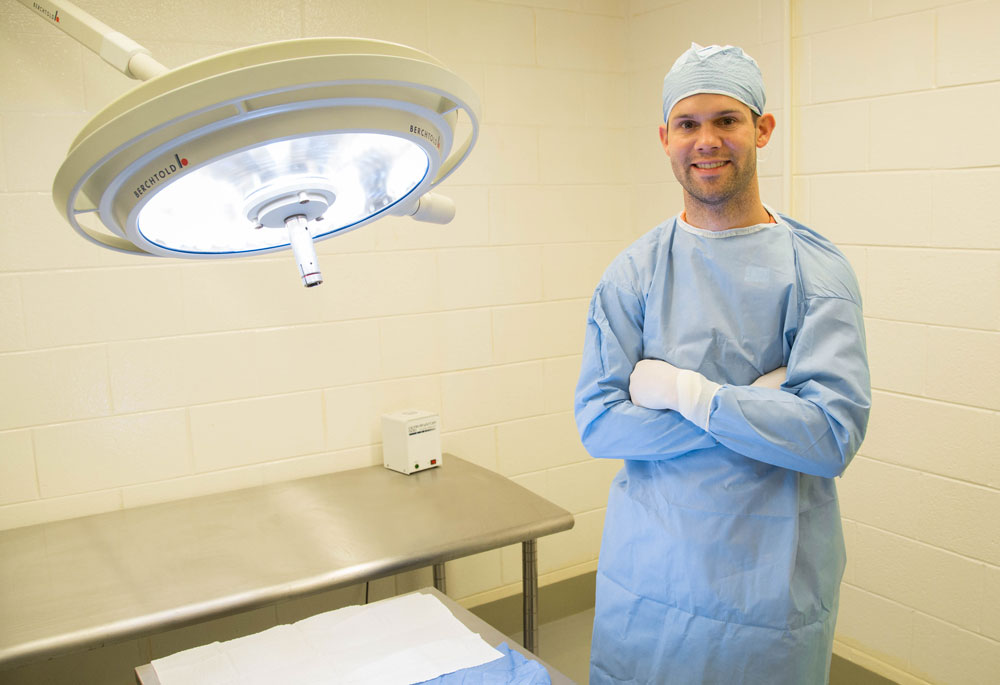Michael McClure, Ph.D., assistant professor in the Department of Biomedical Engineering at the Virginia Commonwealth University College of Engineering, is developing a strategy that could allow a patient to regain use of a severely damaged muscle.
McClure has received a $500,000 Defense Medical Research and Development Neuromusculoskeletal Injuries Rehabilitation Research Award through the U.S. Department of Defense (DoD). McClure is working with Jonathan E. Isaacs, M.D., professor and chair of the Division of Hand Surgery in the VCU Department of Orthopaedic Surgery, to develop a way to reinnervate the muscle through neurotization.
In some cases, multiple nerves serve the same purpose for a single muscle group. McClure said surgeons can move a redundant nerve and implant it into the muscle graft, while connecting its other end to the main nerve bundle. “It’s a live nerve and as soon as you implant it into the muscle graft, it’s going to sprout new axons and start a signalling process that’s going to be advantageous,” he said. “It could be a perfect storm for regeneration.”
Researchers hope that this strategy of using decellularized muscle grafts — tissue that has been stripped of its cells, leaving behind the matrix and structure — will improve muscle and nerve regeneration and reinnervation. Improving function may also lead to the body building more muscle fibers.
An article about the research appears in the August 2018 issue of Tissue Engineering.
“This article demonstrated the potential of decellularized tissue grafts for use as scaffolds in tissue engineering applications,” said Antonios G. Mikos, Ph.D., co-editor-in-chief of the journal and the Louis Calder Professor of Bioengineering and Chemical and Biomolecular Engineering at Rice University.
McClure previously worked at the Hunter Holmes McGuire VA Medical Center in Richmond, one of five Veterans Administration Polytrauma Rehabilitation Centers in the U.S. “We have a very large polytrauma center here. We have a lot of soldiers coming through, and I was able to see the extent of some of these injuries,” he said.
McClure recalled the case of one soldier who was severely injured by an Improvised Explosive Device (IED), losing his front and middle deltoid, part of his pectoralis muscle and much of his quadricep — “almost the entire right side of his body didn’t have muscle. His range of motion was severely impaired.”
That's what motivated McClure: the desire to do something and help patients with such injuries.
McClure’s current research builds upon previous work in collaboration with MTF, a nonprofit, physician-led tissue bank based in Edison, N.J. Working with collaborator D. Joshua Cohen, M.D., assistant professor of biomedical engineering at VCU, McClure took grafts of calf muscle from rats and implanted them into models with a 30 percent functional deficit to analyze what happened over several weeks. The researchers found that with those implanted grafts, muscle fibers regenerated and the calf would perform better on muscle force tests than it would using tissue from the same body.
But that study left one issue unresolved: “We didn’t know whether these muscle fibers were actually innervated. That was sort of the big question mark that led to the idea behind this [DoD] grant.”
